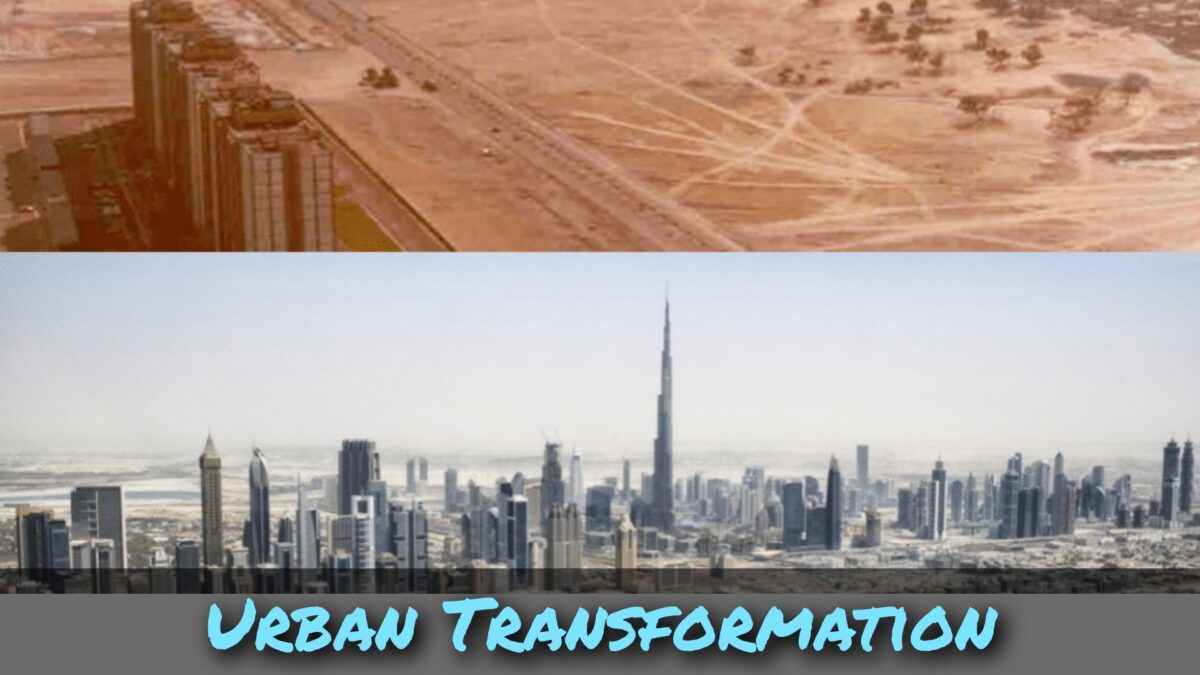This article is related to urban transformation.
Table of Contents
Urban Transformation Meaning
Whenever one comes across the term “Urban” what does it convey? Big cities, huge traffic, large building and many related things.

The 21st century is also known as the Urban century by UN Habitat which the UN agency for sustainable human settlement.
This is not only because more and more people are choosing to live in cities. It is also because of the strategic benefits that cities offers towards a lifestyle.
Cities are often associated with social and economic problems like poverty and segregation, community conflicts, and economic vulnerability, as well as ecological problems related to pollution and resource distribution.
But they are also rich in economic and cultural wealth, and a dynamic development that can provide opportunities for technological, economic and social innovations.
It is worth to note that about 50% of the global populations lives in urban areas and this trend will keep on increasing.
When cities are going to be the major transformed living and working space for the human race in the next few decades, it becomes immensely important for the cities to be sustainable in nature.
The emerging concept of sustainable urban transformation places a strong emphasis on structural transformation processes that are broad, multi-dimensional, and have a potential for radical change. These processes can effectively direct urban development towards sustainability. It also means understanding cities as a source of possibilities for sustainability, promoting active collaboration among diverse stakeholders, and integrating different perspectives and bodies of knowledge and expertise.
Now the question arises how cities can be transformed into sustainable cities?
Broadly the correct approach to this would be combining 3 major areas:
1. Governance
Proper planning, execution and supervision by the authorities.
2. Innovative Business
The established businesses should start making radical changes in their approach of doing business. Also, new innovators should come up with viable solutions of the existing problems.
3. Lifestyle Transformation
Focus should be made on how one can shift his daily lifestyles towards a different and sustainable pathway.
Explanation
The above discussed areas are not at all expected to operate and run on their own and isolated from one another. There should be symbiotic relationship between all these areas so that a proper exchange of ideas, resources and approach is done.
All the strategic planning about developing cities to sustainable cities should be effective towards making a positive change. It may come across many challenges but the zeal to transform should not be lost. The plan should be ambitious but also at the same time it should be realistic.
Importance should also be given to how much time it is going to take for making an impact. And most importantly it should not be a rigid plan. The plan as well as the approach should be flexible in nature such that if it fails it should fails early so that recovery is easy and damage is minimum.
While solving a problem or moving towards a radical transformation, contradictions and conflicts are inevitable. Focus should be on how to resolve the conflicts and eliminate all contradictions. This should be done quickly and inclusively. Any small fragment left ignored may magnify to pose a bigger threat in future.
Summing Up
Therefore, one can say that cities are complex to transform but they can be transformed beautifully sustainable if the approach is well planned, thoroughly tested & experimented and inclusively implemented.
It is highly motivating to know that 11 out of 17 Sustainable Development Goals by the UN is about cities.
It will be very interesting to go further in this topic at a later stage. Till then let us pledge to go through those 11 goals and start making small changes for our better future.
